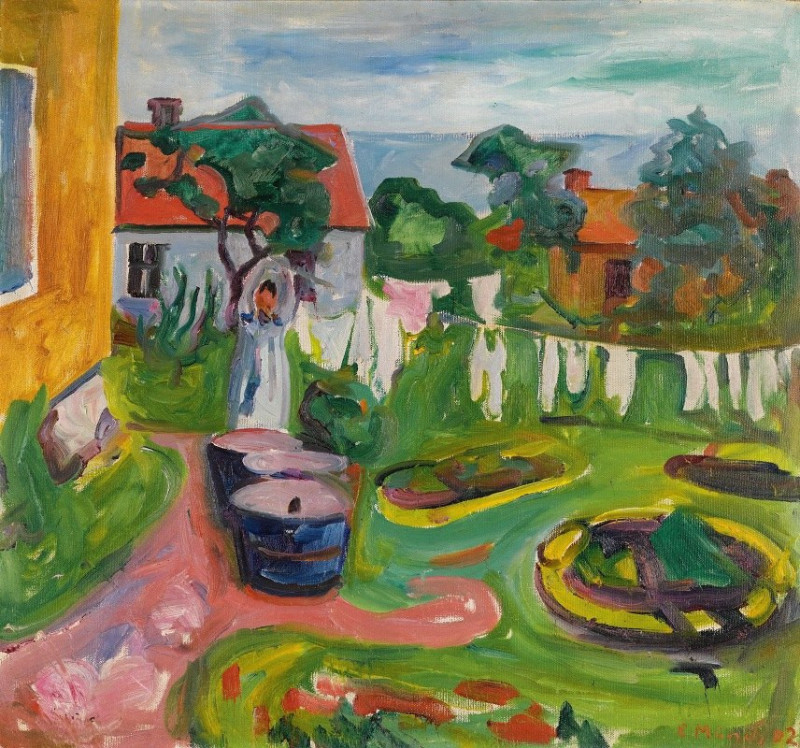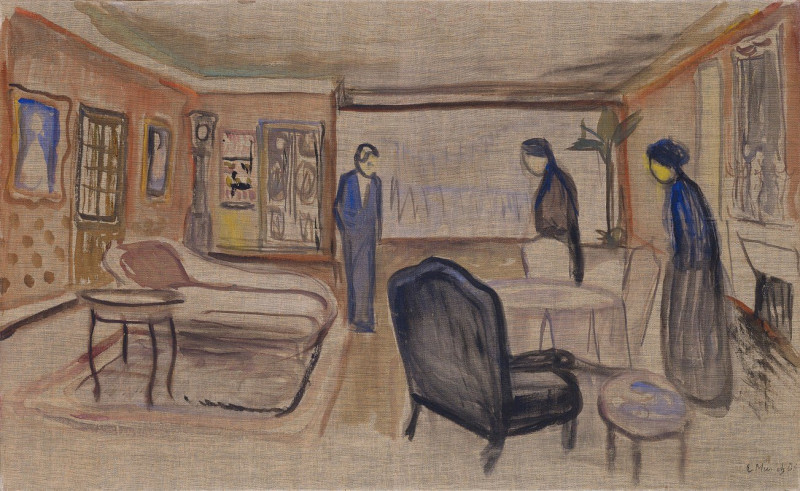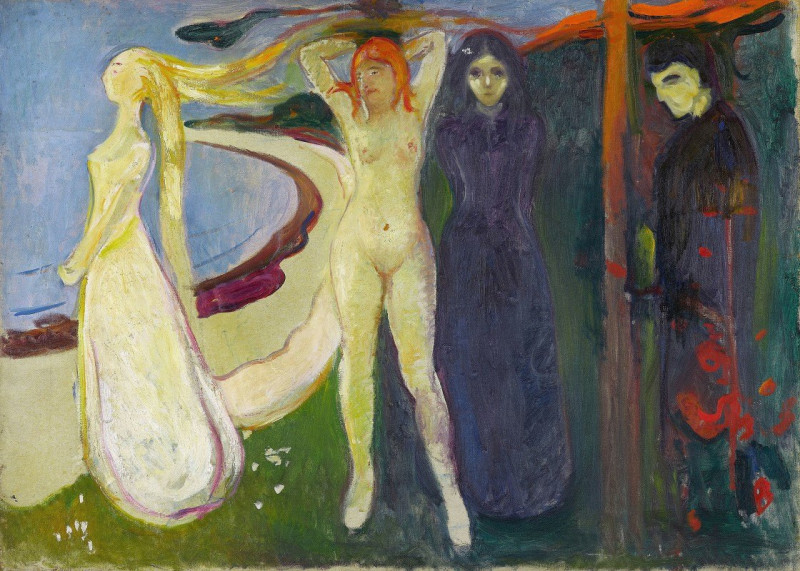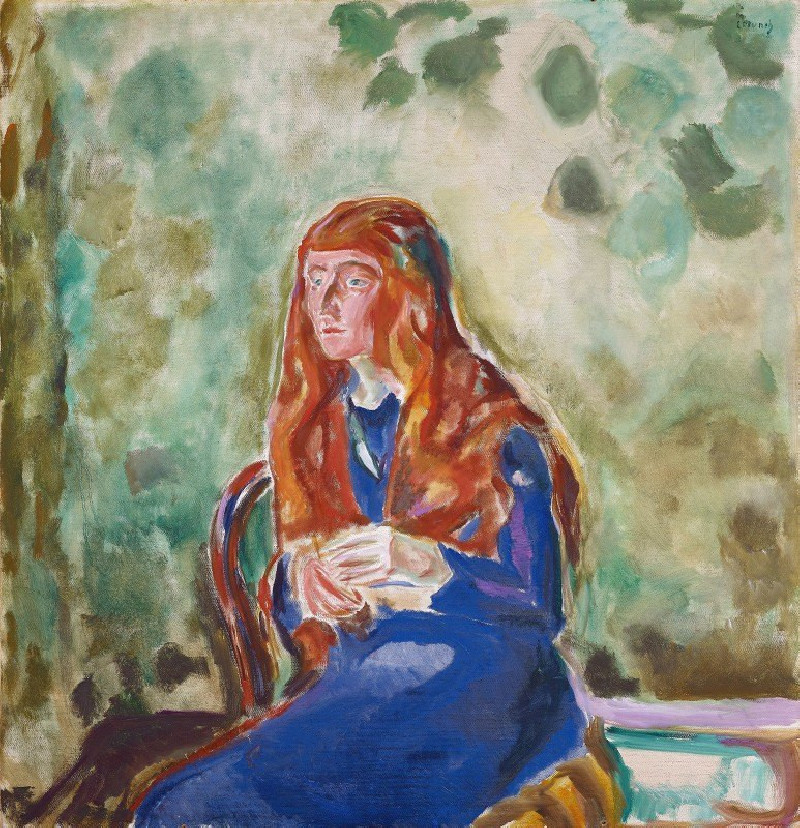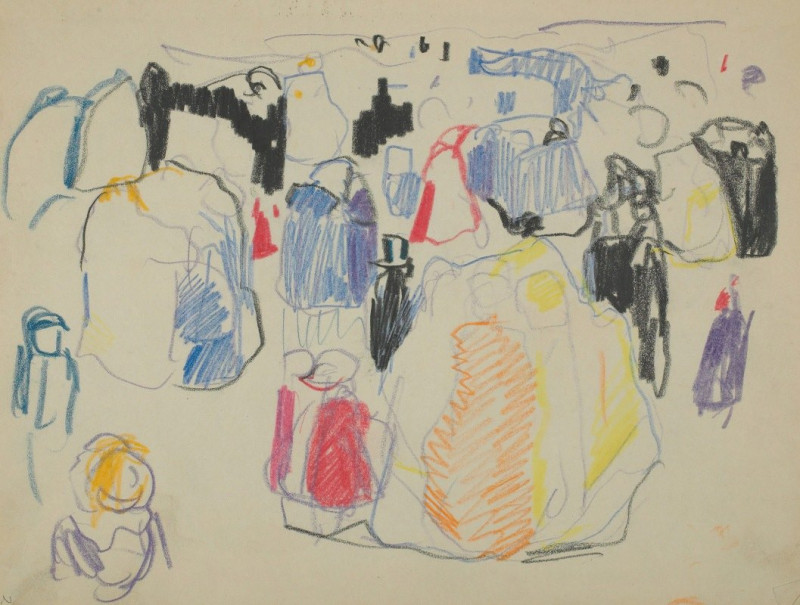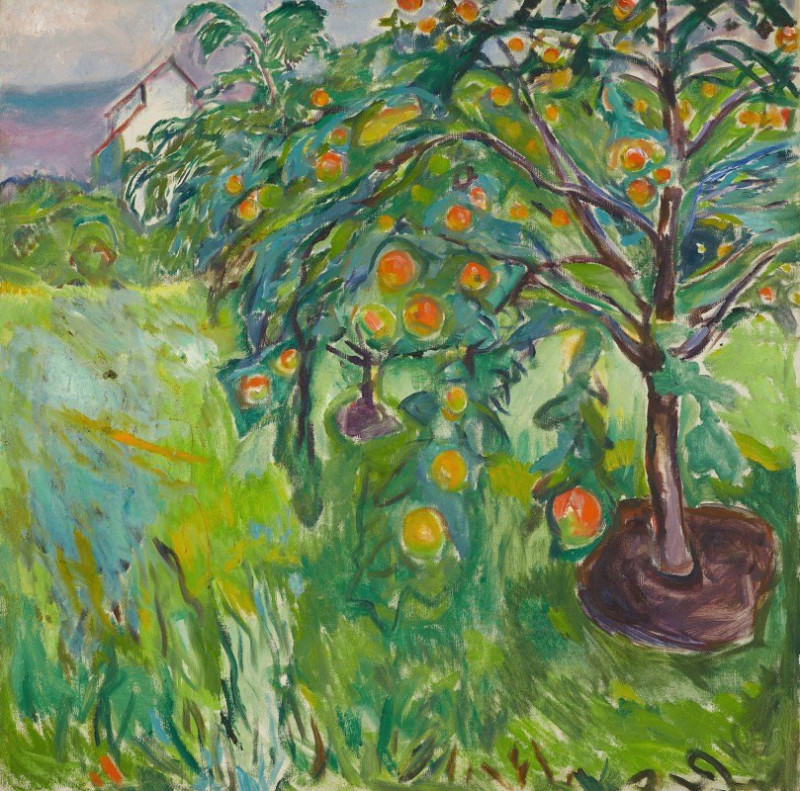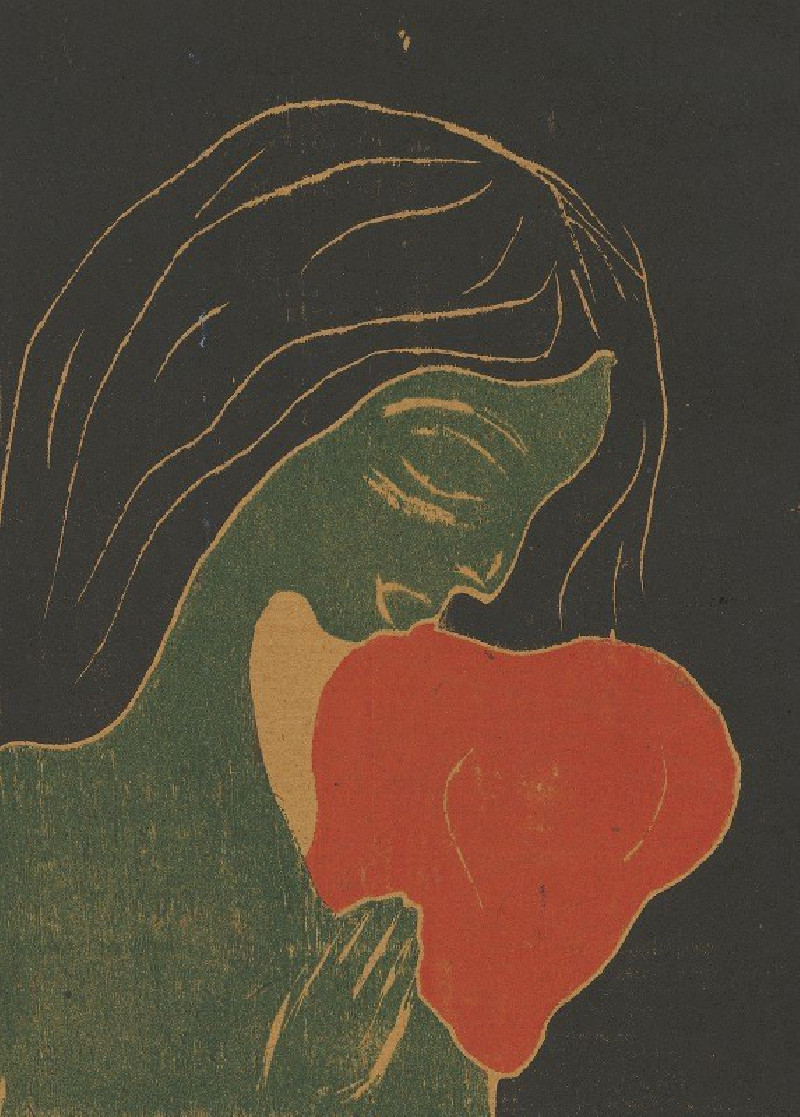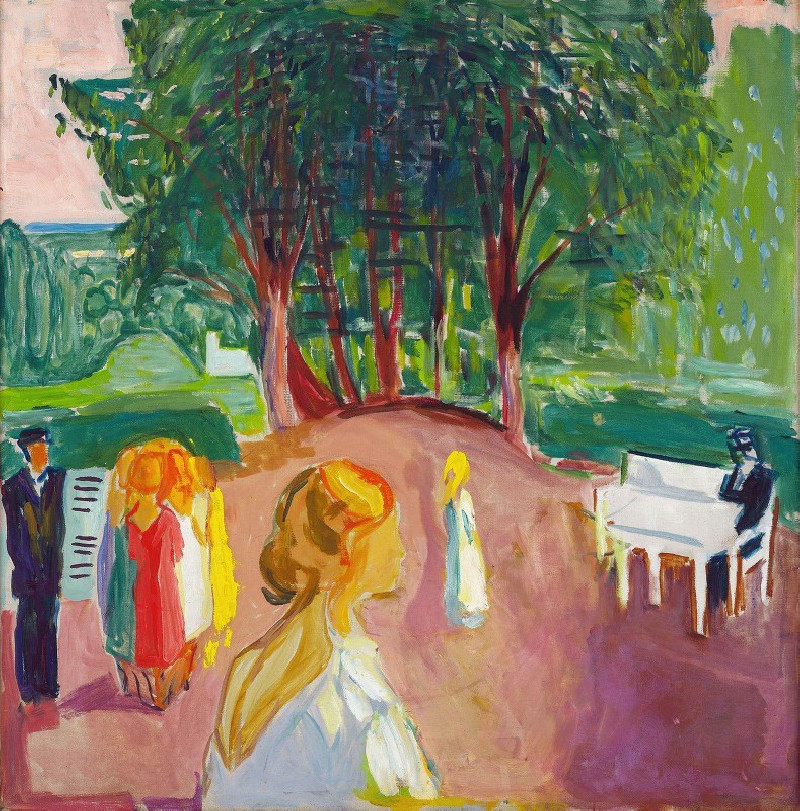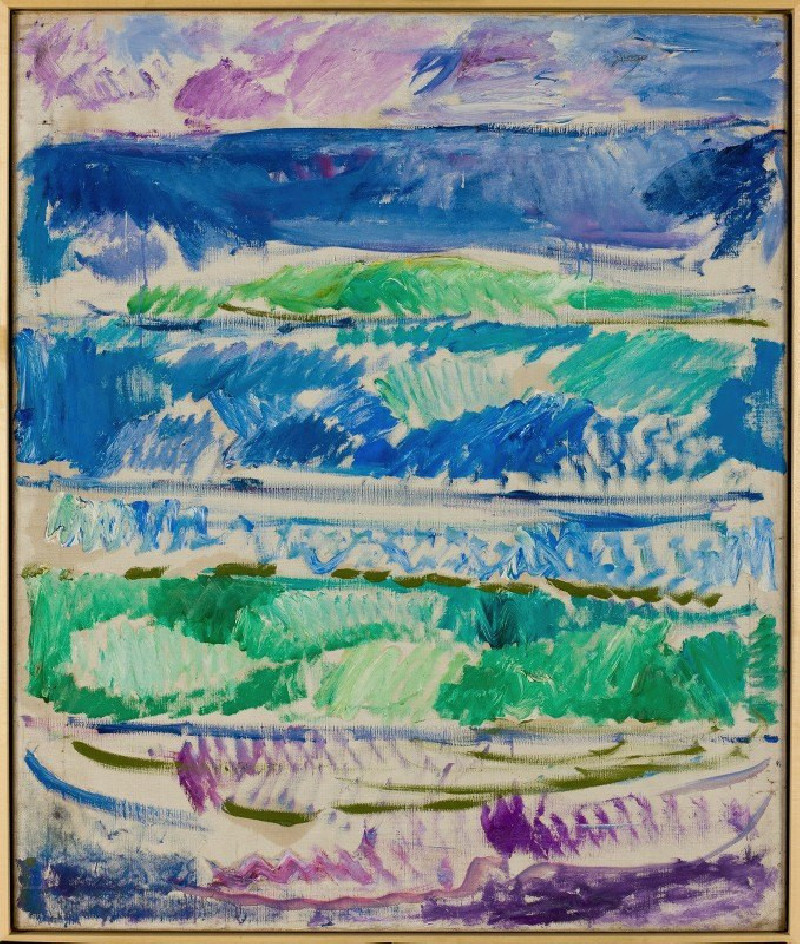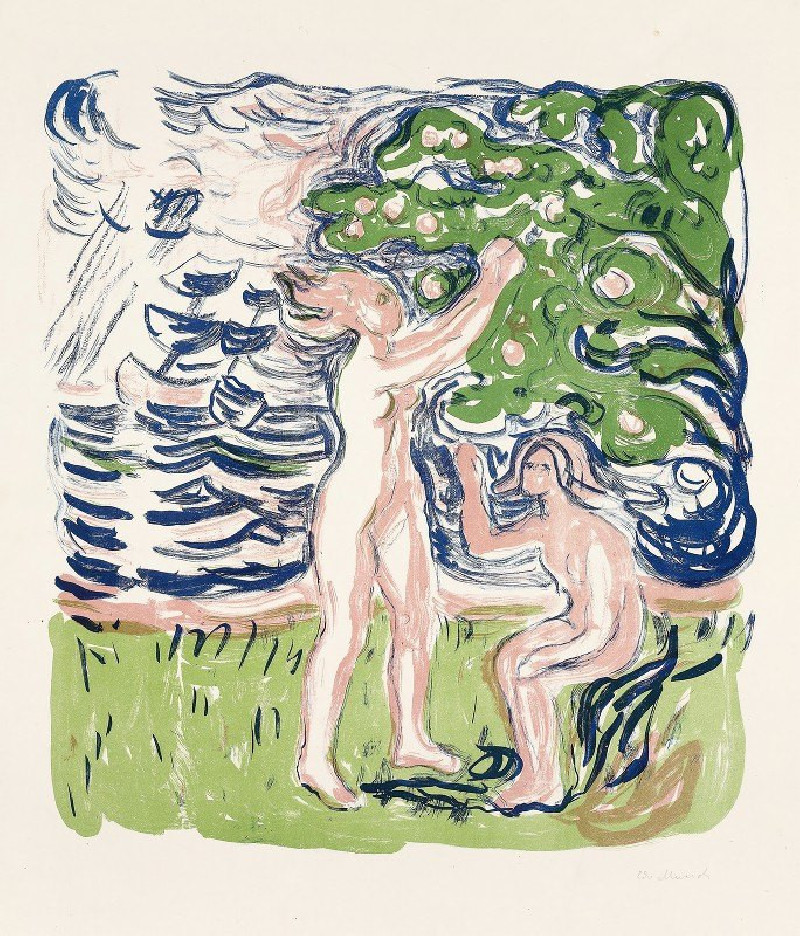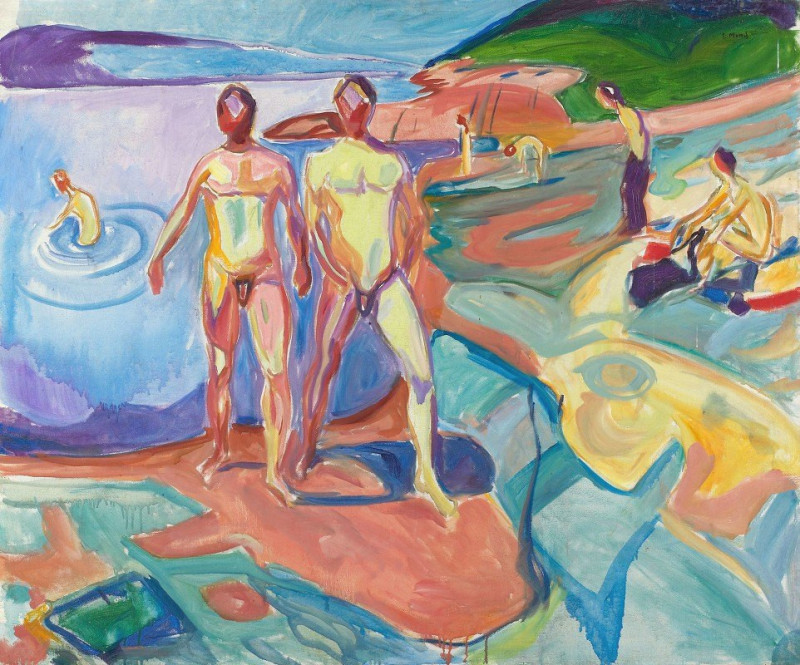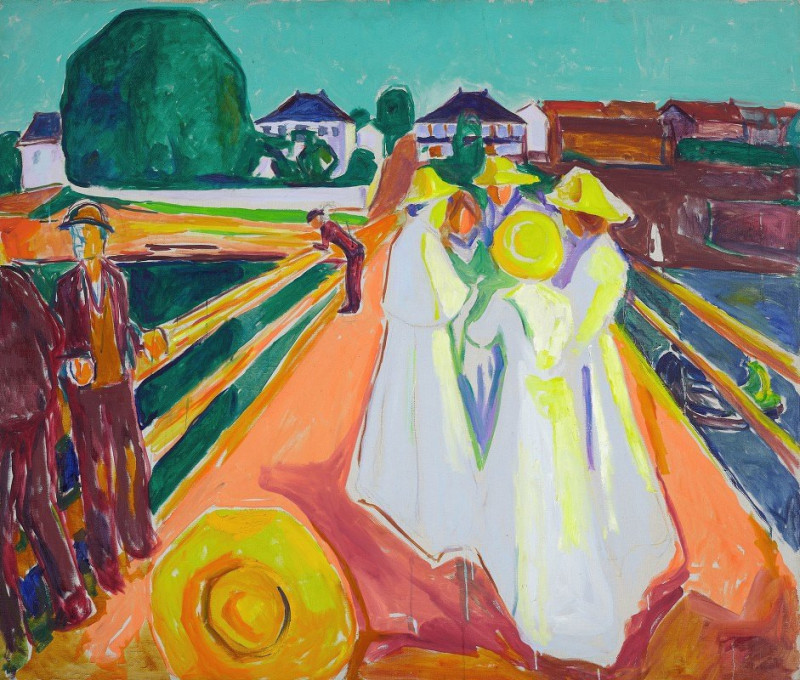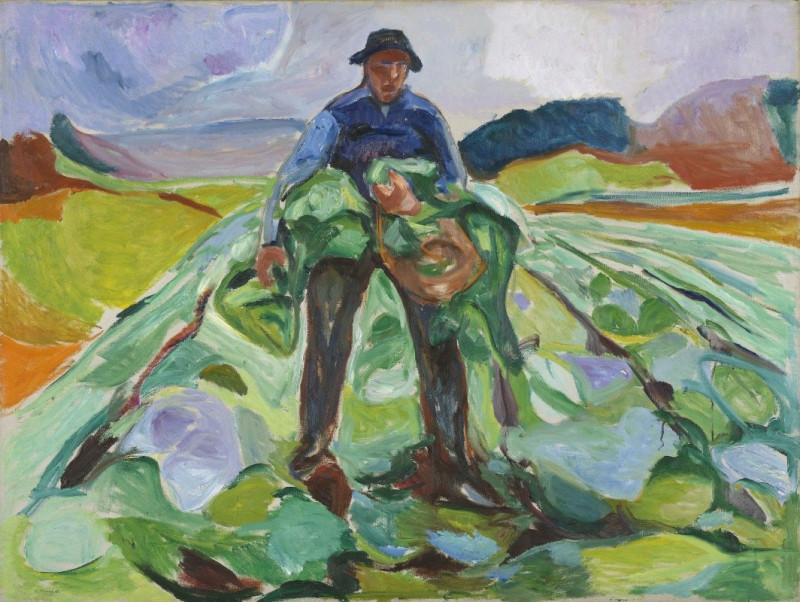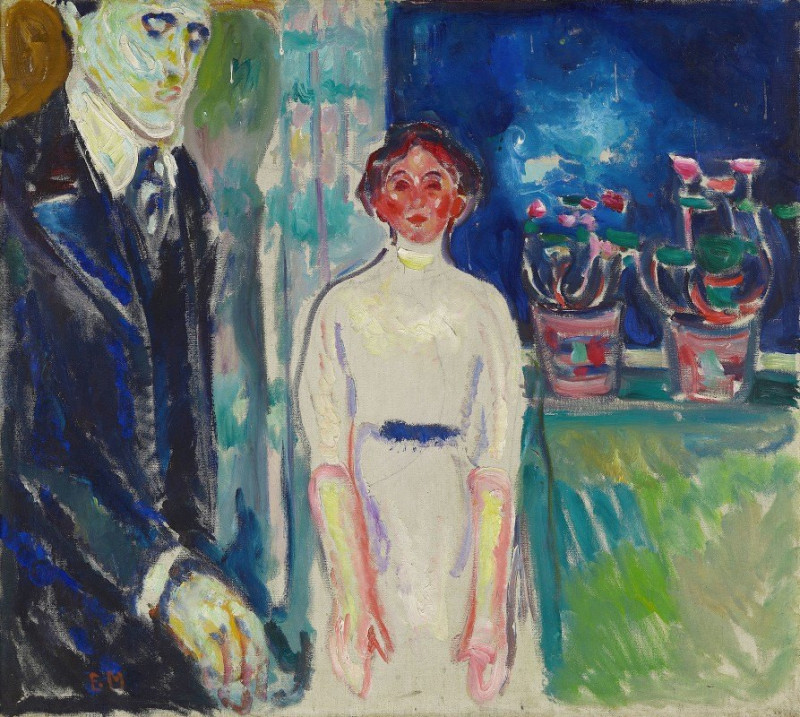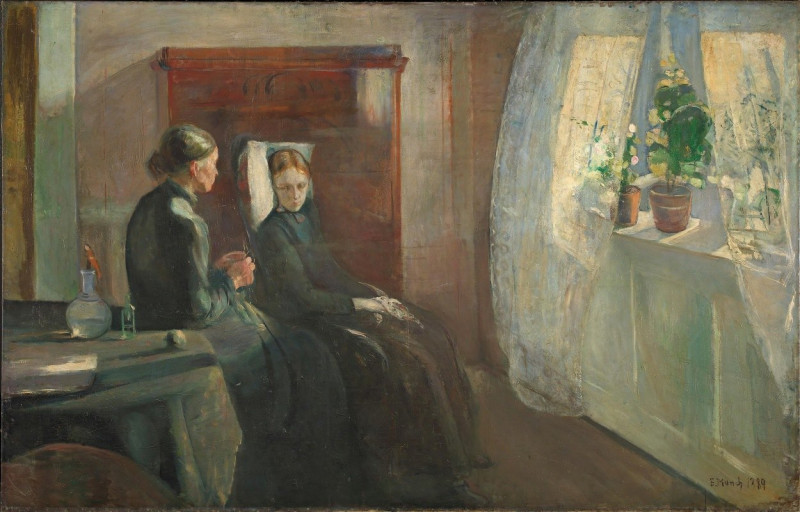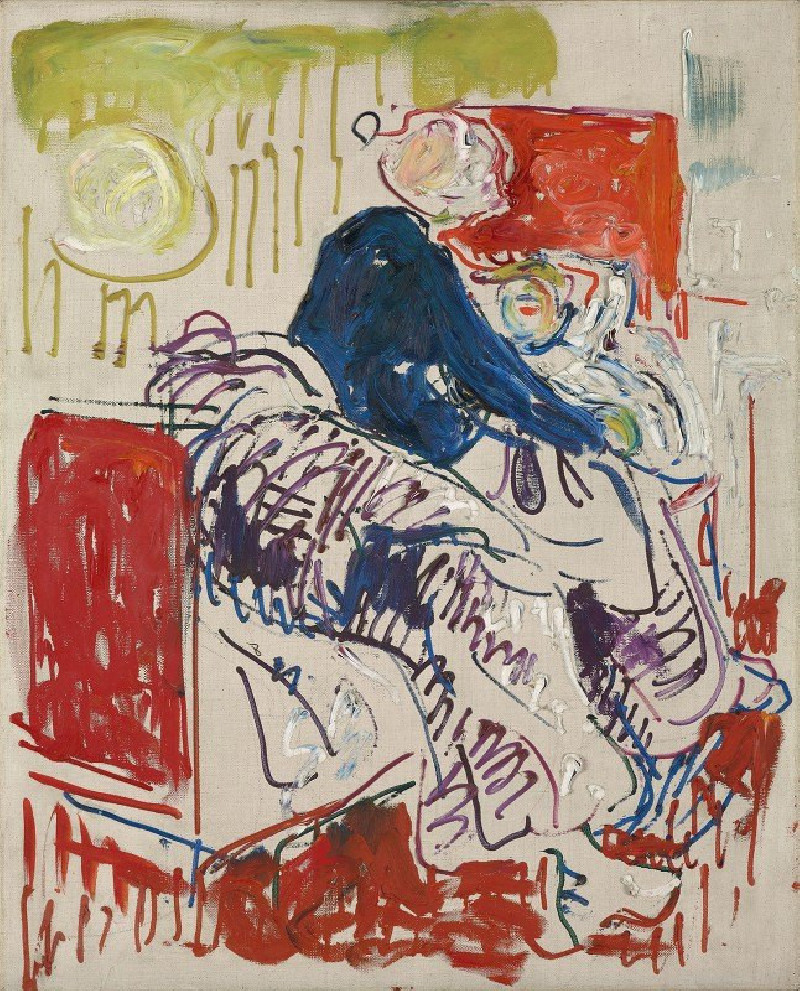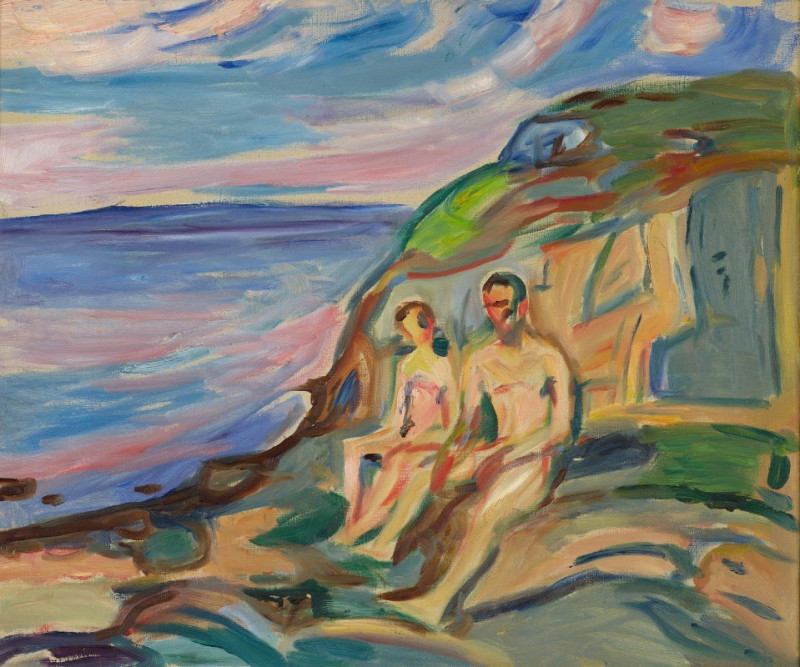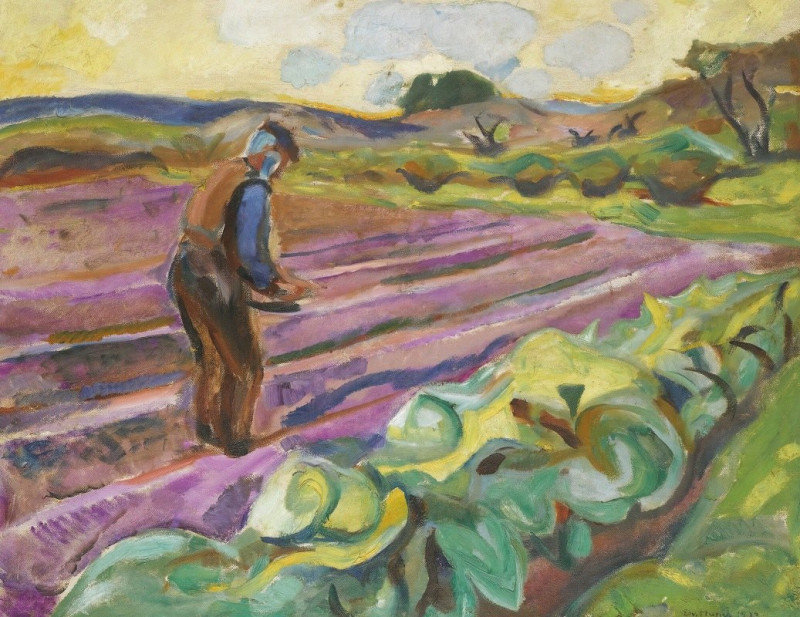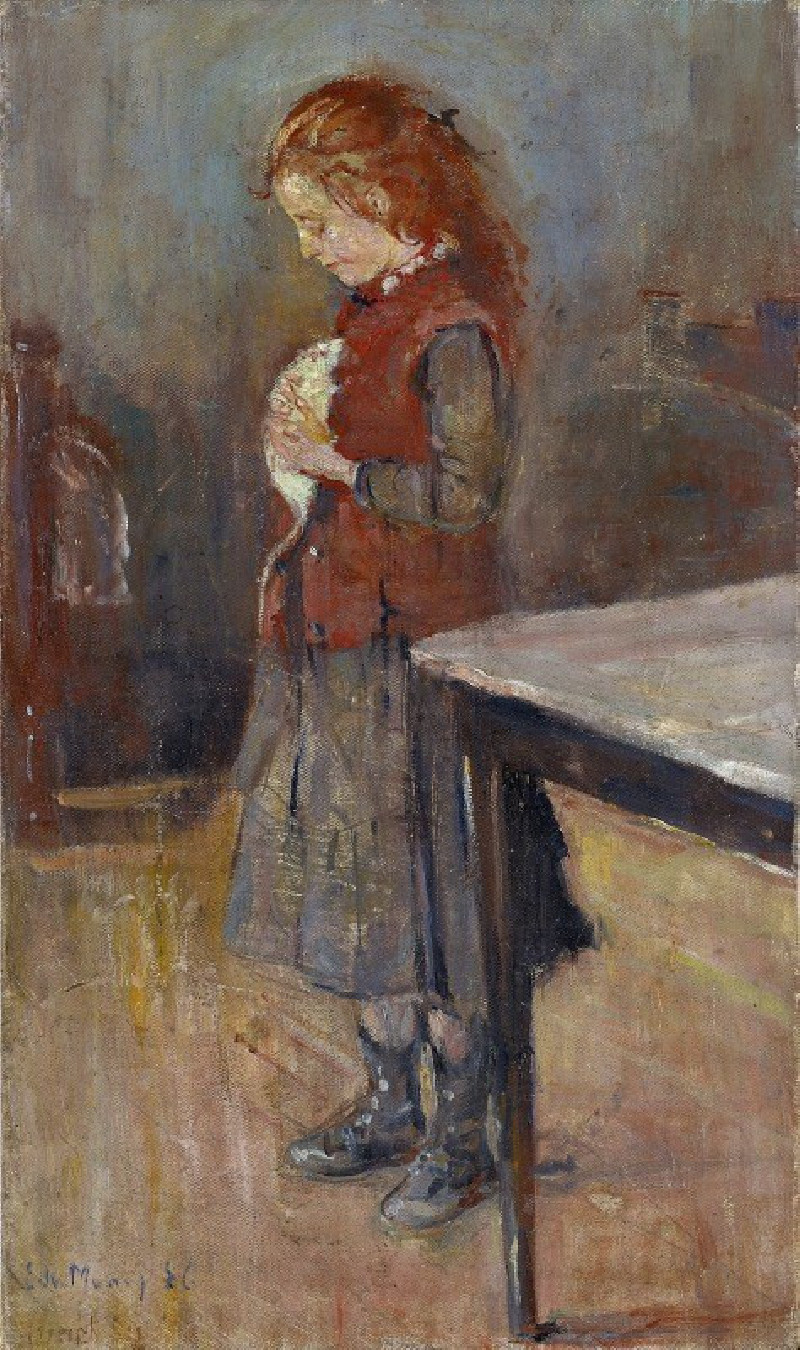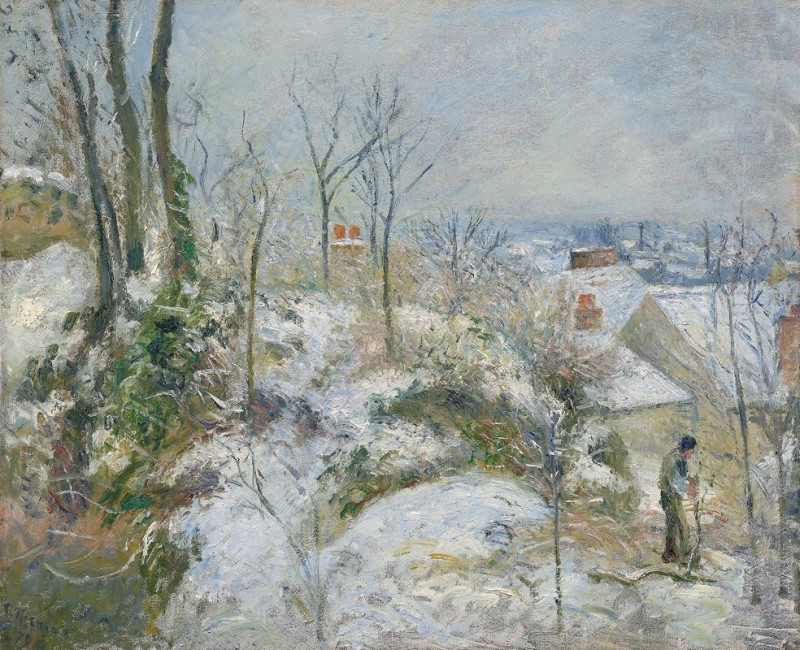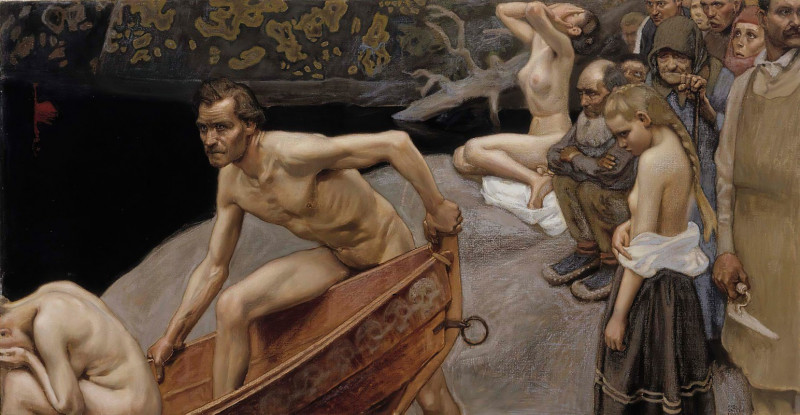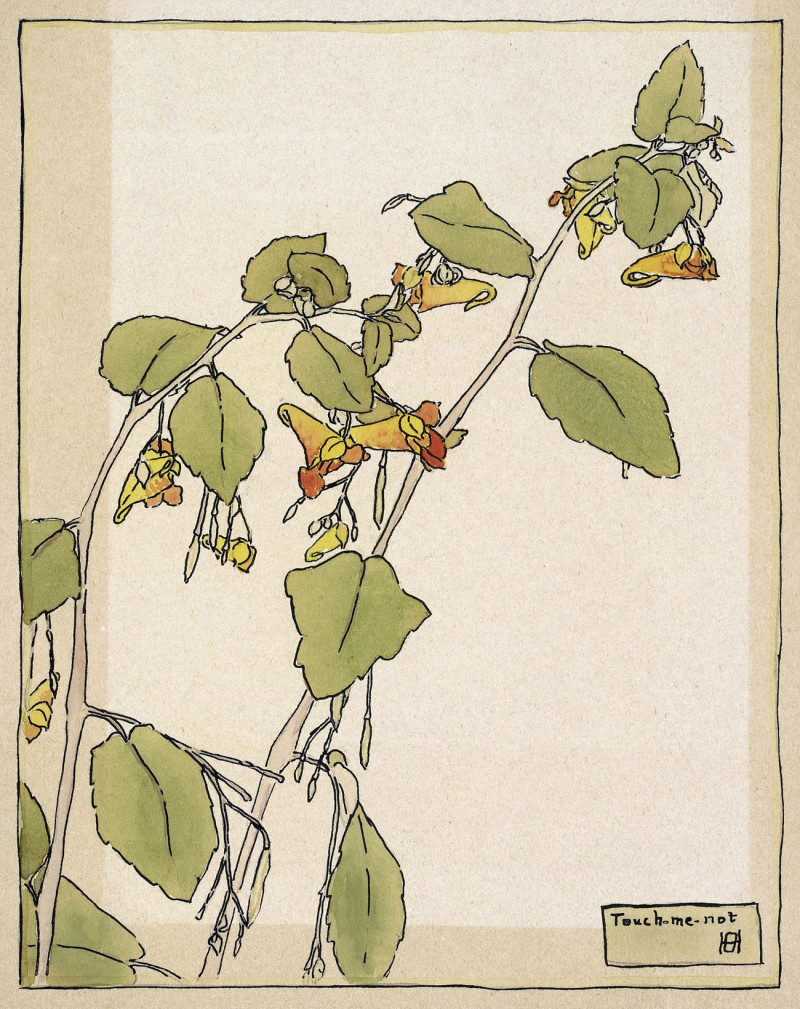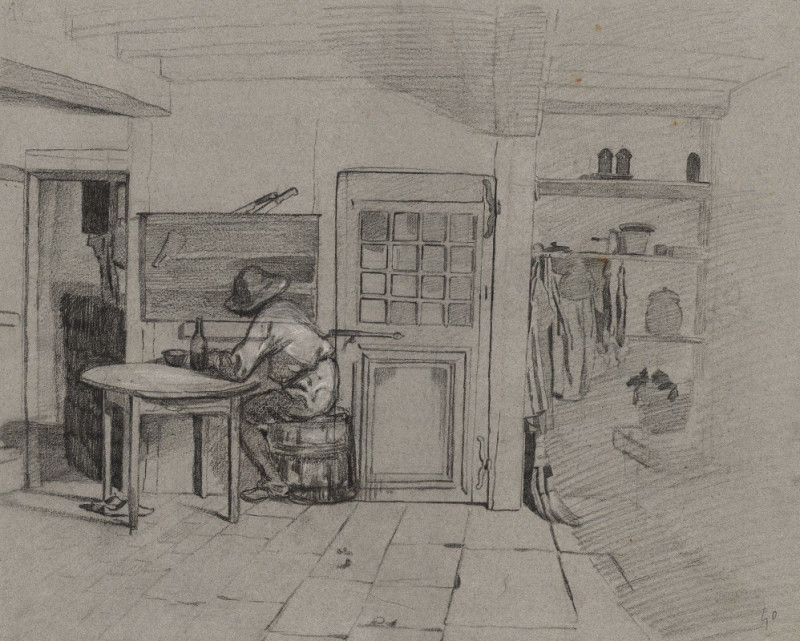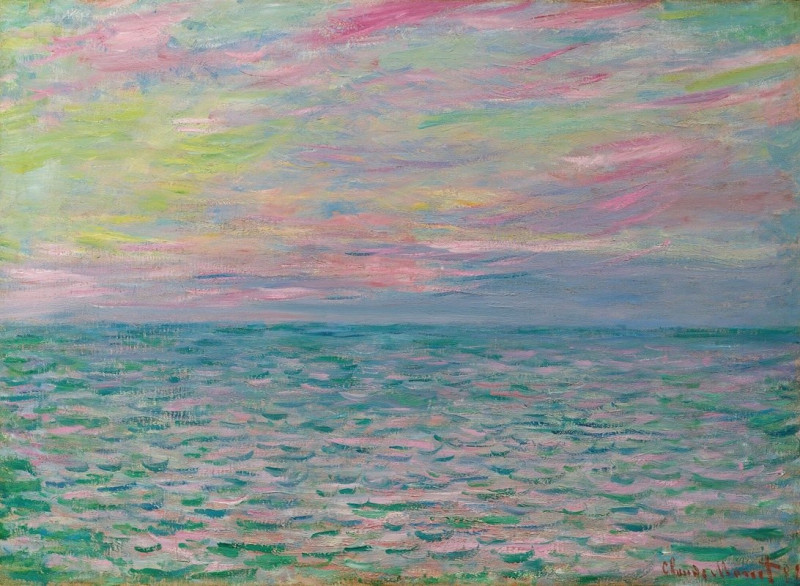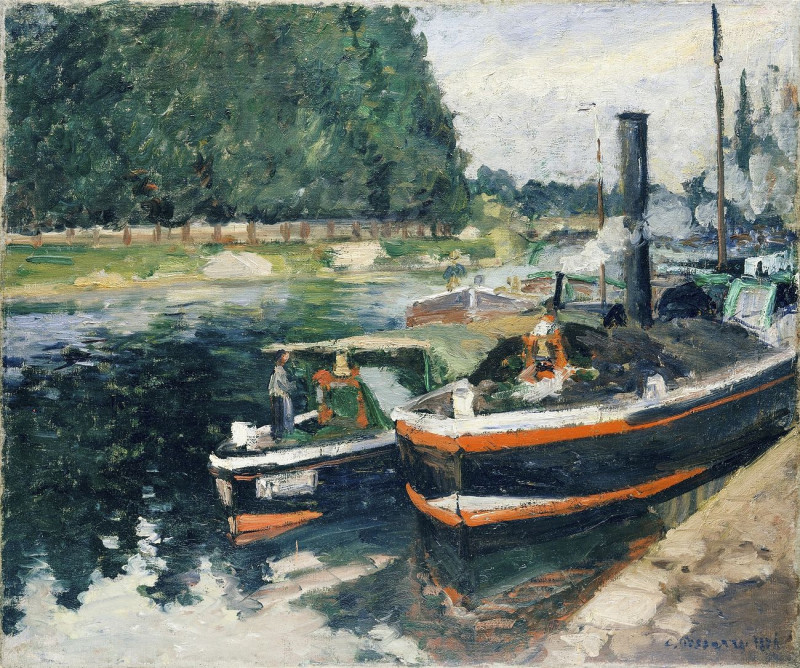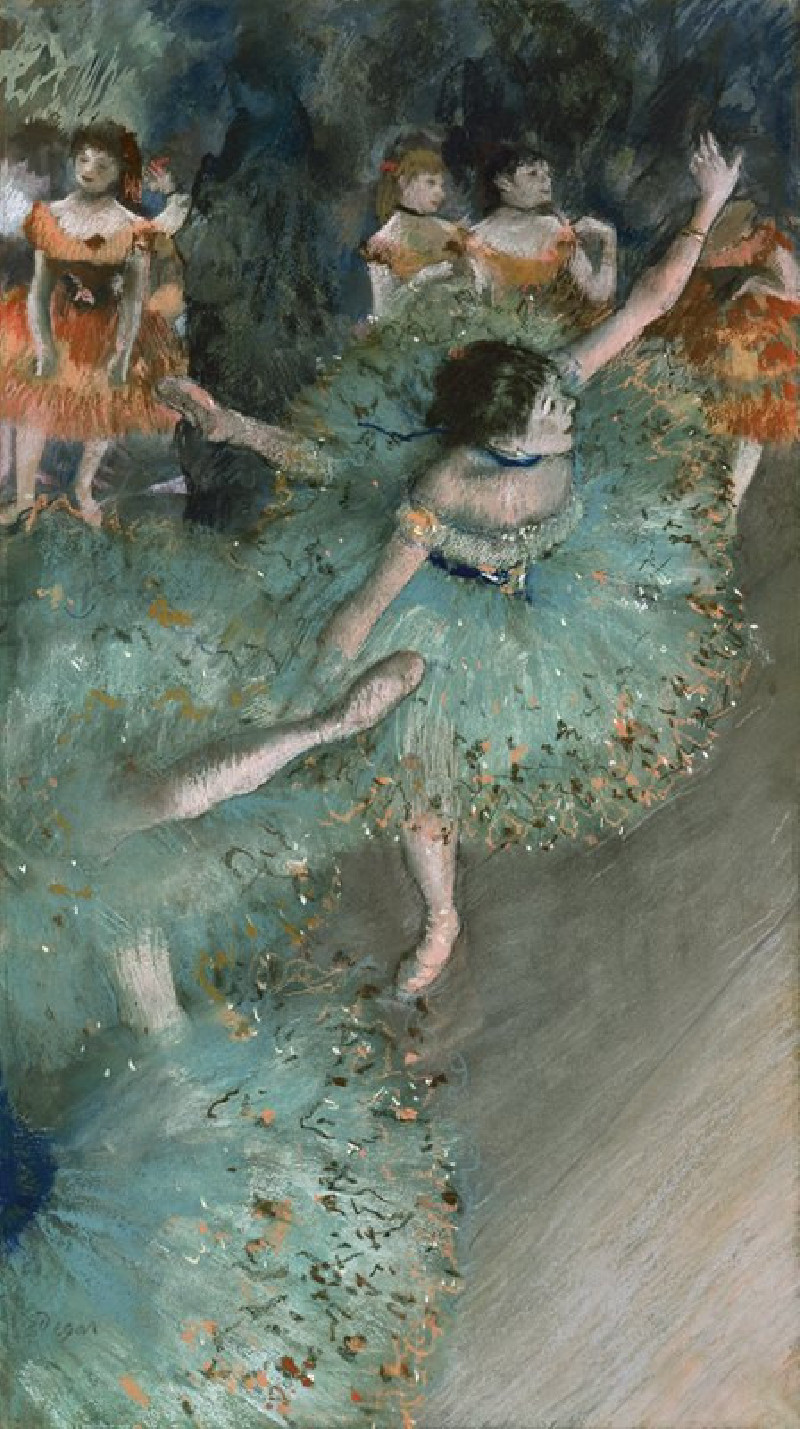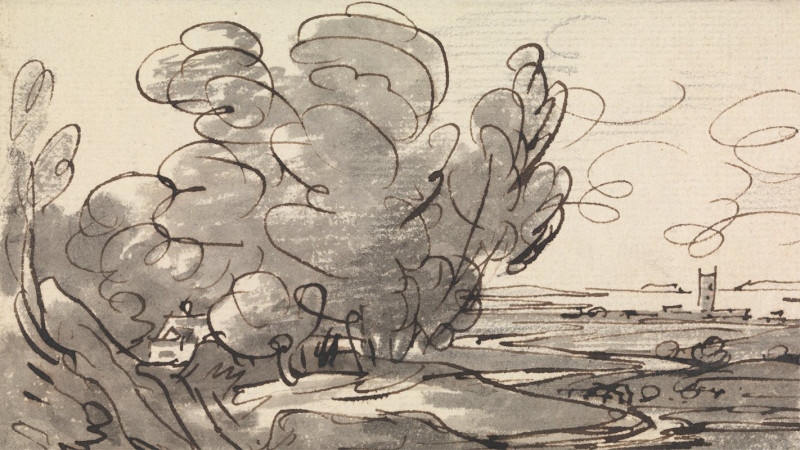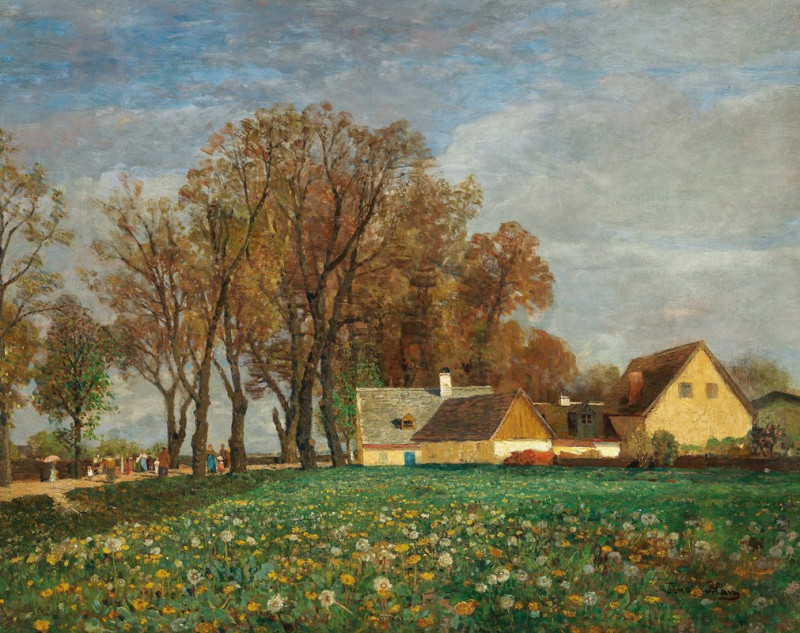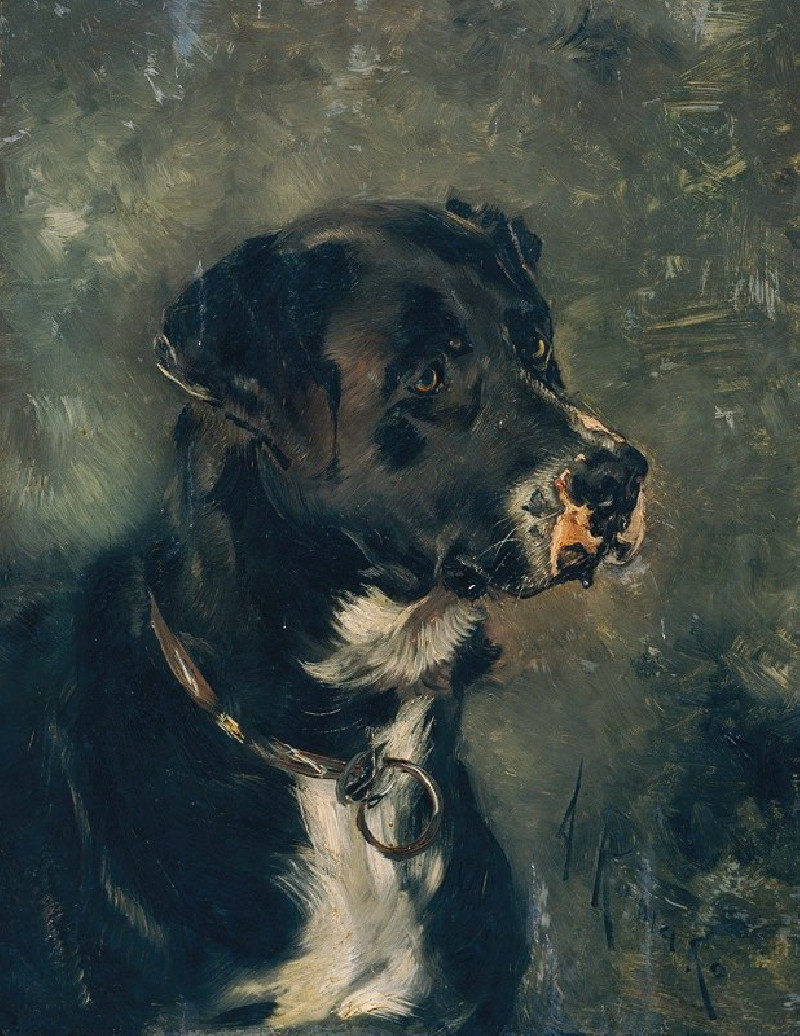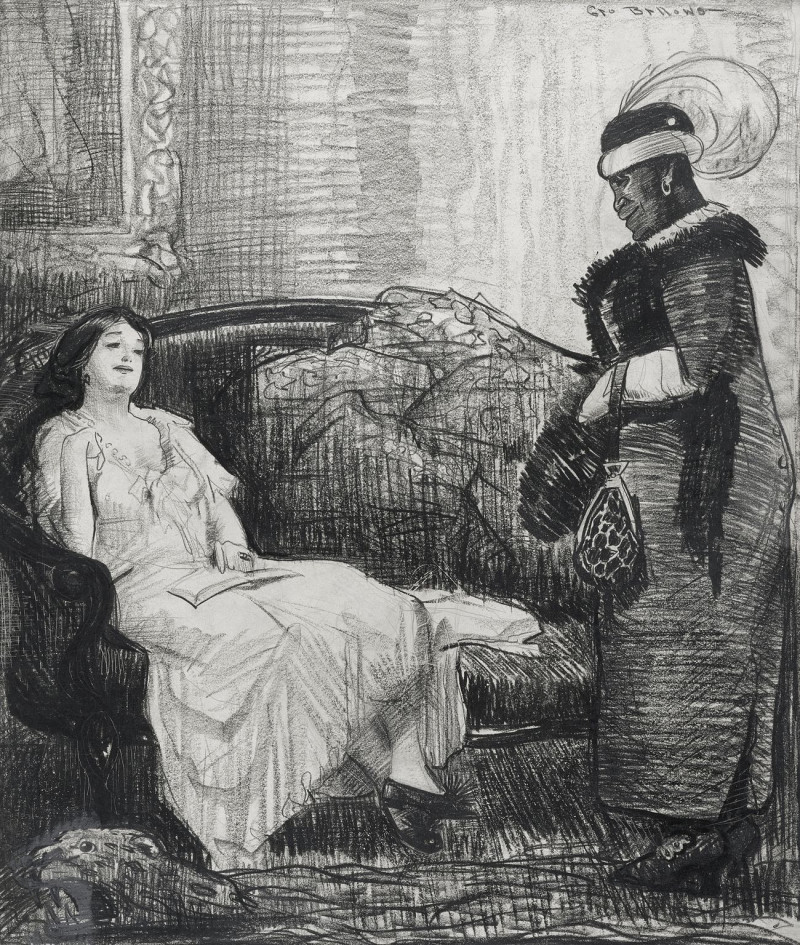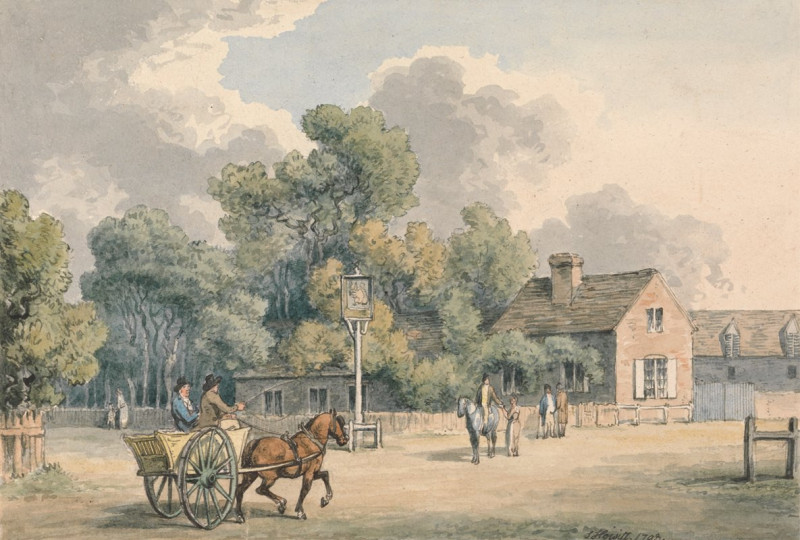Promenade in Spring (1917)
Technique: Giclée quality print
Recommended by our customers
More about this artwork
"Promenade in Spring" by Edvard Munch is a vibrant, impressionistic portrayal of a lively outing in a park or garden-like setting during springtime. In this painting, Munch uses a palette of soft, yet vivid colors that contribute to the overall cheerful and refreshing atmosphere of a spring day.The scene depicts several figures strolling through an outdoor setting. In the foreground, a group of women wearing white dresses adorned with colorful sashes are prominently featured. Their hats, adorned with broad, yellow bands and light halo-like accents, suggest the lightness and joy associated with spring. Standing near them is a figure in a dark suit, adding a contrast to the light and airy dresses of the women.To the left, we see other walkers viewed from behind, their forms blending slightly into the vibrant background, suggesting movement and a casual, relaxed ambience. The use of blurred outlines and flowing shapes gives the painting an almost dreamlike quality.In the background, the landscape consists of lush, rounded trees and a hint of architectural structures, possibly indicating the edge of a park near an urban area. The sky is rendered in light blues and pinks, enhancing the peaceful and serene mood of the painting.Overall, Munch’s work captures the essence of a leisurely walk in the fresh, rejuvenating atmosphere of spring, highlighting the social aspect of the season as people gather to enjoy the outdoors after the long winter months.
Delivery
Returns
Edvard Munch (12 December 1863 – 23 January 1944) was a Norwegian painter. His best known work, The Scream (1893), has become one of Western art's most iconic images.
His childhood was overshadowed by illness, bereavement and the dread of inheriting a mental condition that ran in the family. Studying at the Royal School of Art and Design in Kristiania (today's Oslo), Munch began to live a bohemian life under the influence of the nihilist Hans Jæger, who urged him to paint his own emotional and psychological state ('soul painting'); from this emerged his distinctive style.



